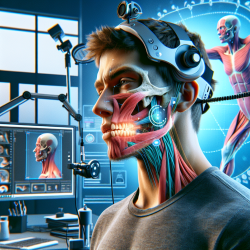Introduction
As a speech-language pathologist, understanding the intricate dynamics of mandibular muscles can significantly enhance therapeutic outcomes, particularly for children. Recent research, such as the "Review on Mandibular Muscle Kinematics" by Martínez-Silva et al., provides valuable insights into the biomechanics of the jaw and its implications for oral health and speech therapy.
Key Findings from the Research
The study highlights the use of the Vicon® motion capture system, renowned for its precision, to analyze mandibular dynamics. This system captures three-dimensional movements with an error margin of less than 0.5 mm, offering unparalleled accuracy in tracking jaw movements.
The research reviewed 23 studies involving 384 participants, focusing on the relationship between mandibular kinematics and various factors such as speech properties, posture, and body movement. The findings suggest that mandibular dynamics are closely linked to oral functions and can influence body posture, especially in children with speech disorders.
Implications for Practitioners
For practitioners, integrating these findings into practice can enhance diagnostic and therapeutic approaches. Here are some practical applications:
- Enhanced Diagnosis: Utilize motion capture technology to gain a comprehensive understanding of a child's mandibular movements, aiding in the diagnosis of speech disorders.
- Targeted Therapy: Develop individualized therapy plans that consider the unique mandibular kinematics of each child, potentially improving speech intelligibility and oral motor control.
- Interdisciplinary Collaboration: Work with dental professionals to address occlusal discrepancies that may affect speech and posture, ensuring a holistic approach to treatment.
Encouraging Further Research
Despite the promising findings, the research also highlights the need for further studies to explore the full potential of motion capture technology in speech-language pathology. Practitioners are encouraged to contribute to this growing body of knowledge by conducting their own research or collaborating with academic institutions.
Conclusion
The "Review on Mandibular Muscle Kinematics" underscores the importance of understanding mandibular dynamics in speech therapy. By leveraging advanced technologies like the Vicon® system, practitioners can enhance their diagnostic and therapeutic capabilities, ultimately improving outcomes for children with speech disorders.
To read the original research paper, please follow this link: Review on Mandibular Muscle Kinematics.










